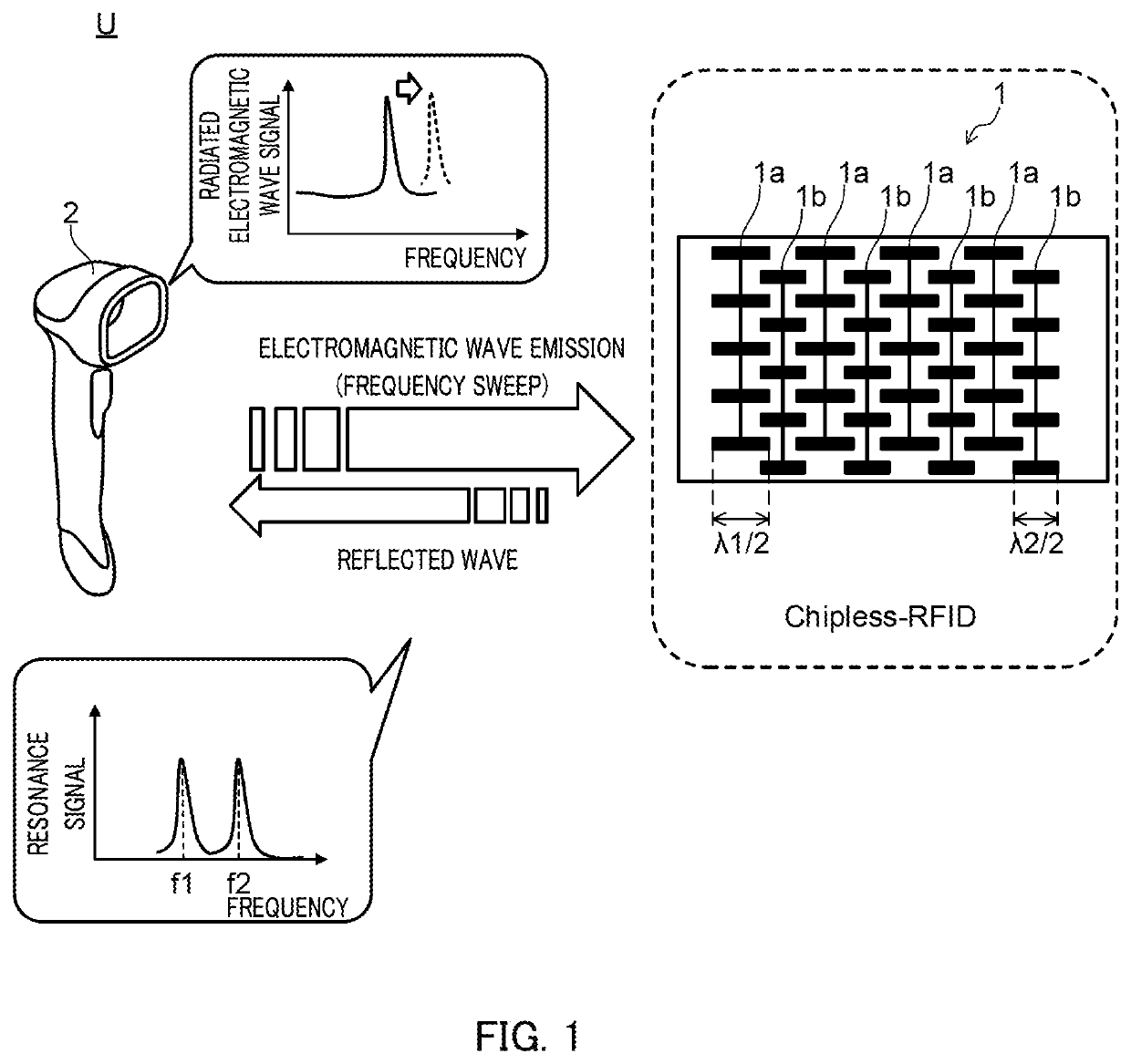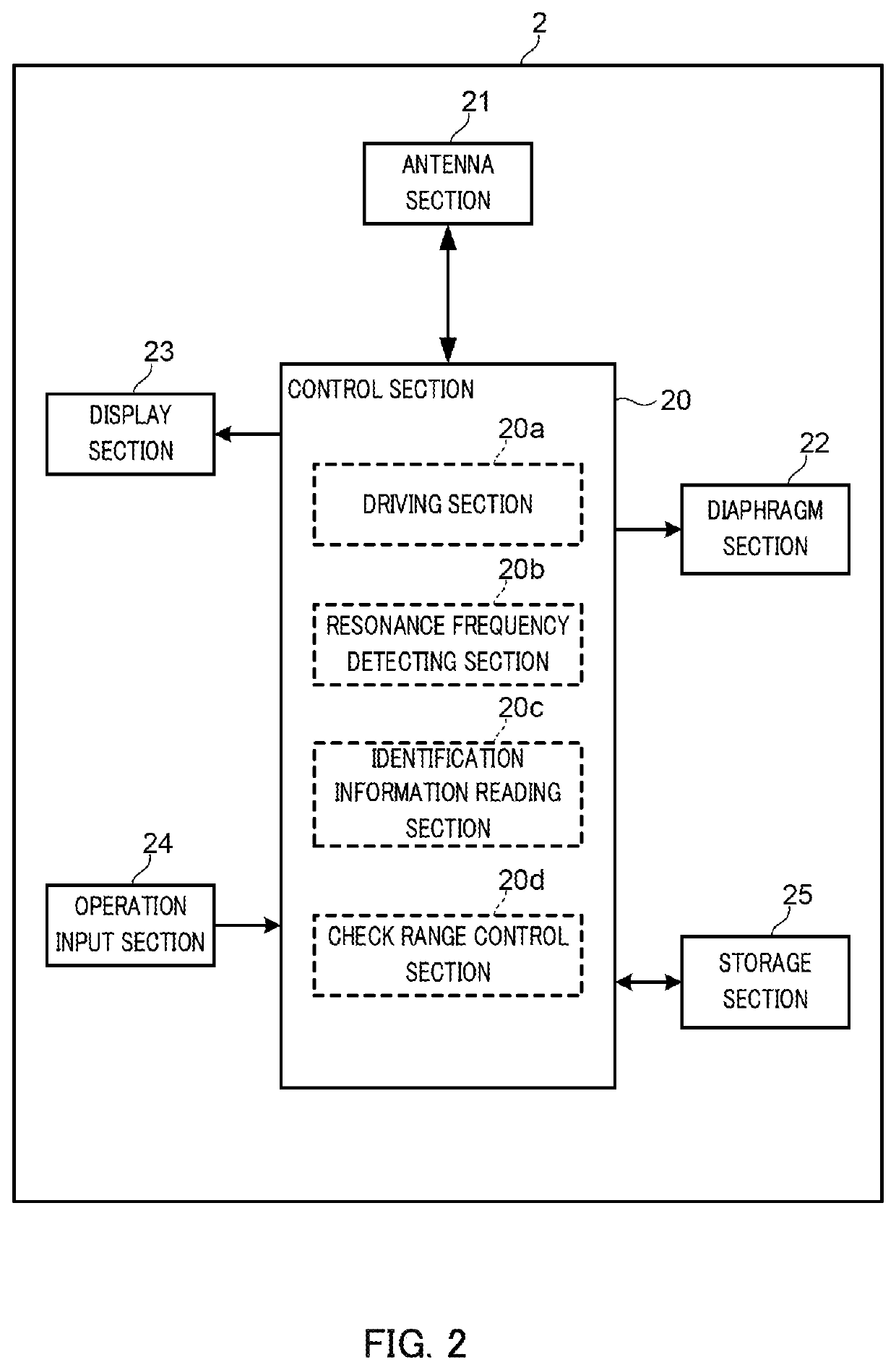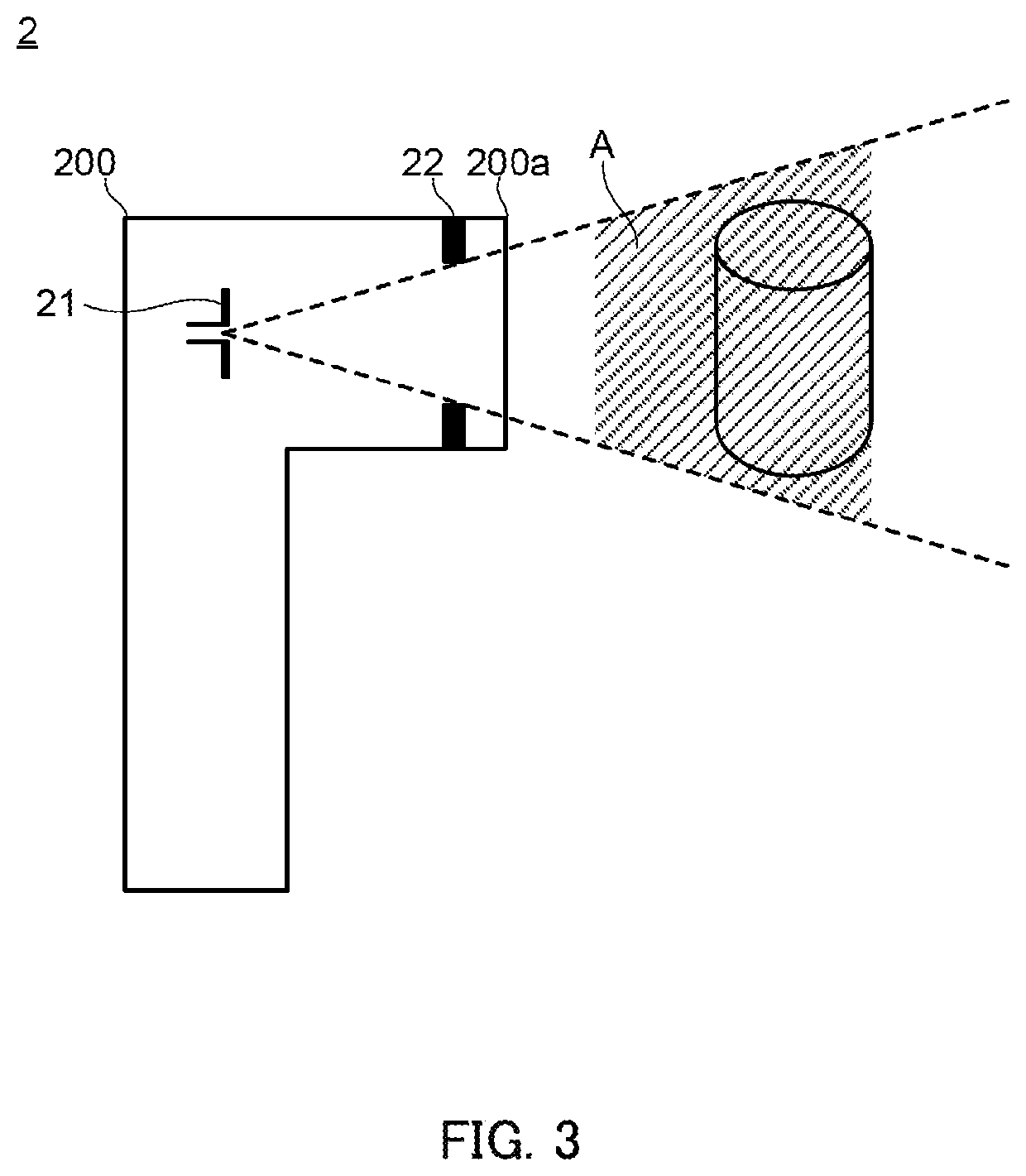Tag Reader, RFID System, and Method for Reading Identification Information
a technology of identification information and tag reader, which is applied in the field of tag reader and rfid system for reading identification information, can solve the problems of troublesome reading operation for the operator, cost problems, and inability to read printed content, so as to increase the information density of chipless rfid tags and increase check accuracy
- Summary
- Abstract
- Description
- Claims
- Application Information
AI Technical Summary
Benefits of technology
Problems solved by technology
Method used
Image
Examples
second embodiment
[0089]FIG. 7 is a diagram illustrating a configuration of tag reader 2 according to a second embodiment. FIG. 7 is similar to FIGS. 4A and 4B and is a view of diaphragm section 22 when viewed from the front side.
[0090]Tag reader 2 according to this embodiment is different from that in the first embodiment in terms of the configuration of diaphragm section 22. For the configuration common to the first embodiment, a description thereof is omitted (the same applies to the other embodiments described below).
[0091]Diaphragm section 22 according to this embodiment includes a pair of door members 22g and 22h that make the opening width variable in the vertical direction and a pair of door members 22i and 22j that make the opening width variable in the horizontal direction. With door members 22g, 22h, 22i, and 22j, the opening diameter (AT in the figure) of opening section 200a is adjusted in an independent manner.
[0092]Door members 22g and 22h that make the opening width variable in the ve...
third embodiment
[0097]FIG. 8 is a diagram illustrating a configuration of tag reader 2 according to a third embodiment.
[0098]Tag reader 2 according to this embodiment includes distance measuring section 26, which is the difference from the first embodiment. Distance measuring section 26 measures the distance between antenna section 21 and tag 1 or the distance between antenna section 1 and an item to which tag 1 is attached. Distance measuring section 26 may measure the distance by using any method and includes, for example, a laser rangefinder.
[0099]The operations of distance measuring section 26 are controlled by, for example, a control signal from control section 20 (check range control section 20d). Distance measuring section 26 outputs the measured distance between antenna section 21 and tag 1 to control section 20 (check range control section 20d) to set the measured value for the check target range of check range control section 20d. In accordance with the set check target range, check range...
fourth embodiment
[0101]FIG. 9 is a diagram illustrating a configuration of tag reader 2 according to a fourth embodiment.
[0102]Tag reader 2 according to this embodiment includes visualizing section 27 for visualizing the region to which the electromagnetic wave is emitted, which is the difference from the first embodiment. Visualizing section 27 is disposed close to antenna section 21 and outputs visible light to a region (B in the figure) corresponding to the region (check range A) to which the electromagnetic wave is emitted. Visualizing section 27 increases the luminance to visualize the magnitude of the output of the electromagnetic wave.
[0103]As described above, tag reader 2 according to this embodiment can allow the operator to recognize the position to which the electromagnetic wave is emitted while the operator is performing a check operation using tag reader 2.
PUM
 Login to View More
Login to View More Abstract
Description
Claims
Application Information
 Login to View More
Login to View More - R&D
- Intellectual Property
- Life Sciences
- Materials
- Tech Scout
- Unparalleled Data Quality
- Higher Quality Content
- 60% Fewer Hallucinations
Browse by: Latest US Patents, China's latest patents, Technical Efficacy Thesaurus, Application Domain, Technology Topic, Popular Technical Reports.
© 2025 PatSnap. All rights reserved.Legal|Privacy policy|Modern Slavery Act Transparency Statement|Sitemap|About US| Contact US: help@patsnap.com



